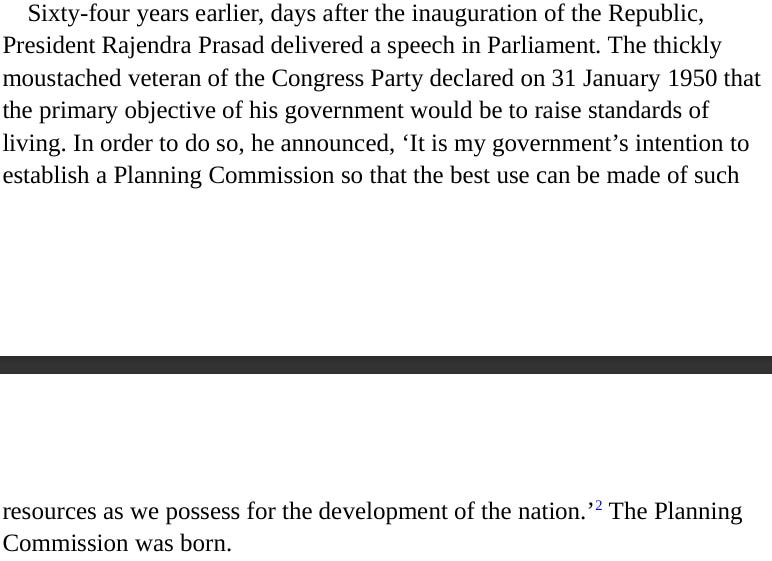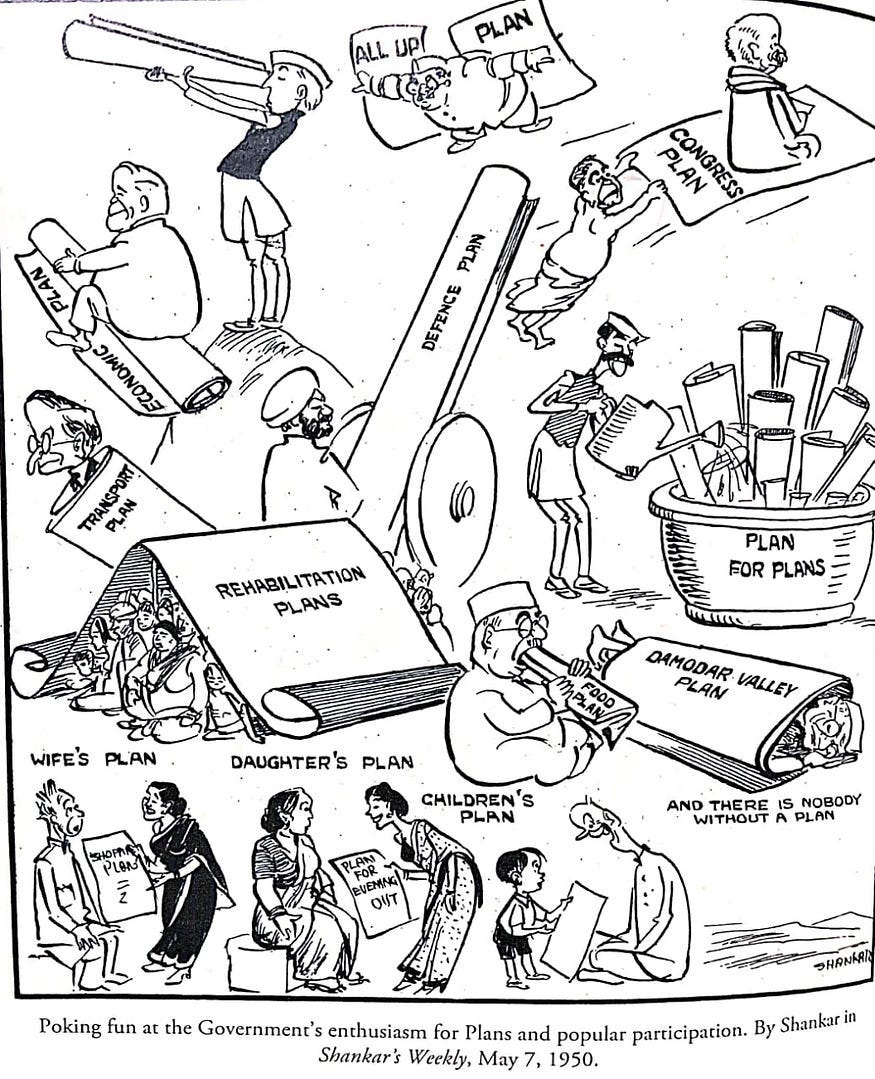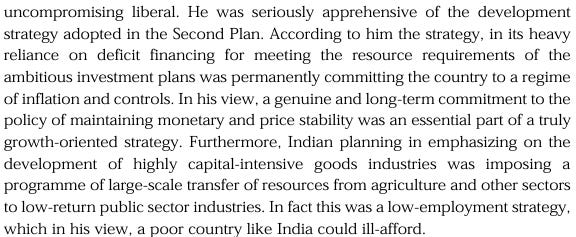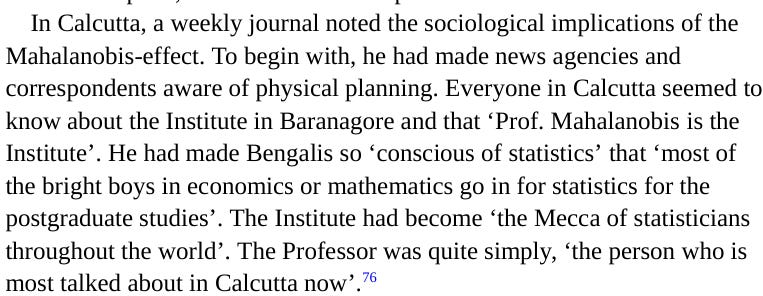The Planning Commission was dissolved in 2014 with NDA/BJP-I and was confirmed during Independence Day 2014, it was described as the “beating heart of the country’s economy” according to Nitin Menon in his book, Planning Democracy. Let us examine this claim’s veracity by looking at the reality of the situation just from the political standpoint and not the economic standpoint as the Planning Commission was more a political endeavor than an economic one.
ECONOMY:
Our first Prime Minister, Mr. Jawaharlal Nehru, had socialist leanings since his time in British colleges, where he was educated. He was a member of the Fabian Society, whose goal was to eventually reach a “socialist” society.
The Planning Commission was created in March 1950 as an advisory body. It was announced during a speech by Rajendra Prasad on 31 January 1950 as their aim was to raise the standard of living, which they failed at. It was an extra-constitutional body and a non-statutory body. Its mission was to steer the Indian economy using five-year plans. While it was supposed to be an “advisory” body, Finance Minister John Mathai resigned from his ministry and contended that the Commission was acting as an extra-constitutional body. It was essentially an older version of the National Advisory Council.
While dissent from inside the government had started to hurt Nehru, it also came from outside the government. It came from political elites such as Rajaji who called planning a new god and the Planning Commission its church, journalists like Shankar in Shankar weekly and economists like BR Shenoy, C.N. Vakil and P.R. Brahmananda.
Rajaji was one of the politicians who decided to speak out strongly against Nehru and socialism at a time when it was in vogue within all sections of society, from the elites such as Birla to the educated middle class and the poor working classes. He was convinced that the socialistic policies of Nehru had created a class of corrupt elites who would gnaw at the nation’s financial resources. He contended that this happened due to the license-permit quota raj. He accused the Nehruvians of borrowing the paint and brush of the communists. His statement about Planning becoming a God came to be true after the first amendment, as it came about due to the criticism of this said god and because the church built around it was based on the orthodox economic belief of the post-war period as all European economists looked to planning instead of the markets and a disturbing trend of gaining legitimacy not from data but from people came to be.
Shankar in Shankar’s weekly used to make fun of the Planning Commission and received attention due to it. Many say that the restriction on freedom of speech which was added to the constitution by the great liberal hero, Pandit Nehru, due to the people’s criticism of the Planning Commission and his land reform policies. This was covered in depth in the book Sixteen Stormy Days by Tripurdaman Singh.
“A series of court judgments that limited the Executive’s imperious reach was germane to the conflict. The government’s attempt to censor both The Organiser, the Rashtriya Swayamsevak Sangh-affiliated publication, and Cross Roads, a left-leaning periodical, had been undone by the Supreme Court; the abolition of the Zamindari Abolition Act and the State Management of Estates and Tenures Act in Uttar Pradesh and Bihar, respectively, met with enlightened judicial resistance led by the high courts of Allahabad and Patna for going against the letter and spirit of Article 31 (right to property) and Article 14 (right to equality), seriously undermining the Congress’s social and economic programs; the Madras High Court dealt a body-blow to the Communal Government Order that legitimized caste-based reservations in educational institutions by reiterating Article 15 (1) of the yet-to-be untrammeled Constitution”[1].
B.R. Shenoy was a lone voice among Indian economists(members of the panel) who disagreed with the second five-year Plan(1956–61) and gave a note of dissent on it. He disagreed with his colleagues on the size of the Plan, deficit financing as a means of raising real resources for the Plan, and certain policy and institutional implications of the Plan frame. He stated that genuine growth required a monetary and pricing policy which was stable and this was not going to be achieved with the second plan due to its heavy reliance on debt financing. This debt financing would lead to the nation being permanently dependent on State control. He with his colleagues from Bombay University, C.N. Vakil and P.R. Brahmananda critiqued these policies vociferously and this essentially led to the death of the Bombay School of Economics, given the authoritarian streak of the Fabian Prime minister which we saw with the first amendment. He was labelled an American Asset and an anti national. This was the outcome of critiquing the Mahalanobis strategy.
The second five-year Plan(1956–61) turned out to be a disaster. It essentially destroyed the financial health of the Republic and led us to the brink of a balance of payments crisis in the late 50s. We reached it in the 60’s due to the third five-year Plan(1961–66). Focusing on the second five-year Plan(1956–61), new “scholars” such as Vivek Chibber and Medha Kudaisya, blamed Finance Minister, T.T. Krishnamachari and private enterprise, as his liberalizing effort had led to the foreign exchange depletion, and this plot was to gain power over the Planning Commission and P.C. Mahalanobis.
While the argument may have some merit, Shenoy had already analyzed the situation in the 50s itself and came out with legitimate reasons for it. He believed that the Indian currency needed to be devalued and that Indian private enterprises had no heft in the global markets. Therefore, to argue that liberalizing foreign exchange use led to the brink of a payment crisis is asinine. He had argued that price control was required and inflation in the domestic market was reflected in the international prices and domestic prices. The devaluation would have helped the Indian economy and aided in controlling the rising inflation.
The second five-year Plan(1956–61) was essentially the end of the consensus regarding the Indian economy. It led to deep fissures within the many groups who supported a Planned Economy. The third five-year Plan(1961–66) killed the consensus, if any semblance of it had survived. G.D Birla a prominent businessmen who supported Planning called it a failure. P.C. Mahalanobis left the commission in 1967 and disowned the second five-year Plan(1956–61) by claiming he had little to do with it, as his role was diminished due to differences with Nehru. Nehru’s demise in 1964 ended the political class’s obsession with it and it lost the prestige it once possessed. In 2014, it was killed institutionally by Indian Prime Minister Modi. It was accorded its rightful place in statecraft, the dustbin.
Orthodoxy:
Economics can be proven with numbers and statistics. It’s a subject that is closest to the sciences within humanities. B.R. Shenoy showed with absolute numbers that the second five-year Plan(1956–61) would lead to economic hardship and it did. He was ignored as the Planning Commission gained legitimacy not from numbers of monetary performance but the number of foreign economists who pilgrimaged to the Planning Commission as the mecca of development economists as economist Hans Singer stated. 400 foreign economists from over 100 countries journeyed here and this was used by the institution as a mark of legitimacy for both their policies and their reputation. According to Gunnar Myrdal, while some economists who journeyed here were top-notch and even Nobel prize winners, most were third-rate economists.
Planned Economies were the orthodoxy in post-war Europe as many “scholars” felt that the inequality of the capitalist system led to the rise of extremist ideologies and, therefore, India trying out a Planned Economy wasn’t revolutionary but toeing the line of European Economic Orthodoxy. That is why these plans of protectionism and debt financing were met with adulation in the West. Ford Foundation and USAID also praised these policies from their various publications.
The American government offered to send Milton Friedman as an advisor. He later won the Nobel Prize in Economics. We chose Galbraith instead because he was a social democrat, while Friedman was a free-market evangelist. This shows another instance where advisors were brought in not to give counterfactuals or advice but to strengthen the orthodoxy around the church of Planning.
Even our Prime Minister-to-be, Dr. Manmohan Singh, then an economist at Cambridge University, observed that the Planning Commission had fallen to groupthink and, innovative monetary policy was not being formulated. He criticized this groupthink but sank under it and advocated the same policies during the 1950s. Jagdish Bhagwati, a free-market Economist noted, that the Planning Commission and economists working or advising it had a central role in the failure of the Indian Economy.
Conclusion:
The prediction of Rajaji had come to pass, for the Nehruvian State, Planning was the new god, the Planning Commission its church and economists its priests, monks, and, if required, the faith militant who would suppress the blasphemers against their religion. Shenoy, Friedman, Brahmananda, and Vakil were the casualties of this faith militant, but the greatest casualty was India’s prosperity.
Sources:
Planning Democracy
Profiles in Courage
https://swarajyamag.com/economy/b-r-shenoy-a-forgotten-economist-and-what-modi-can-learn-from-him























